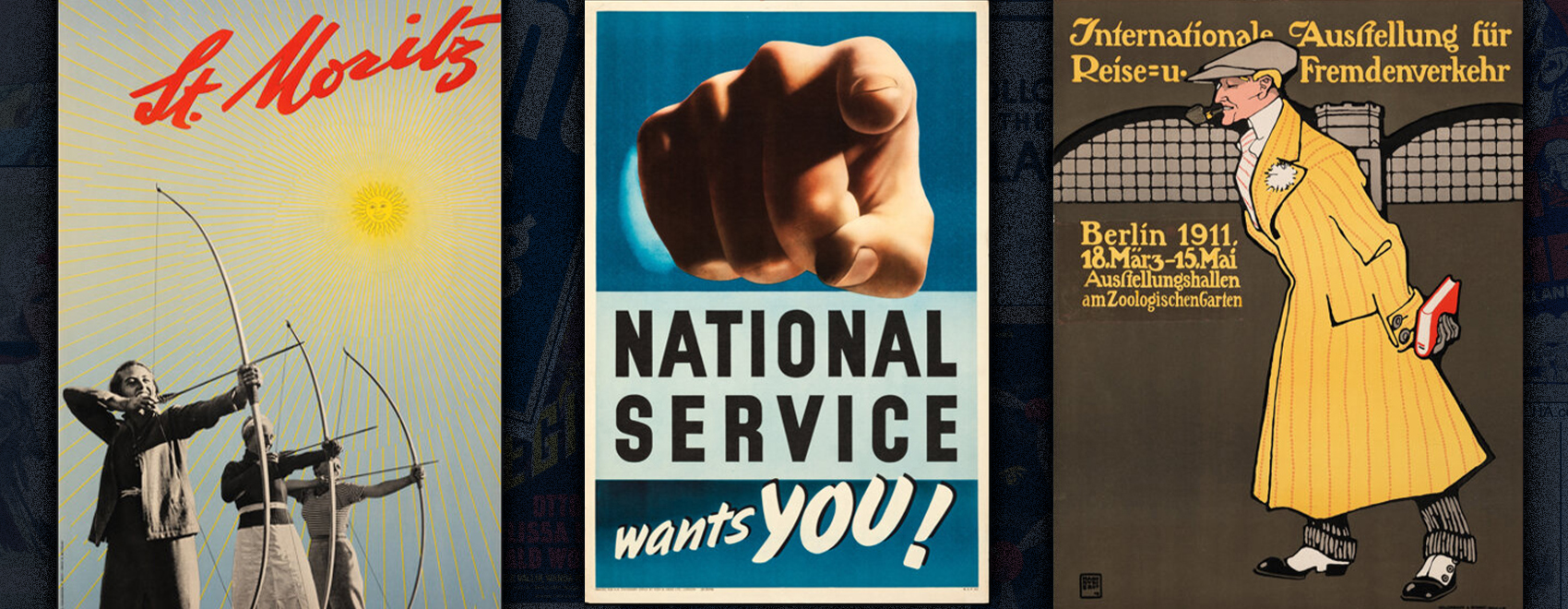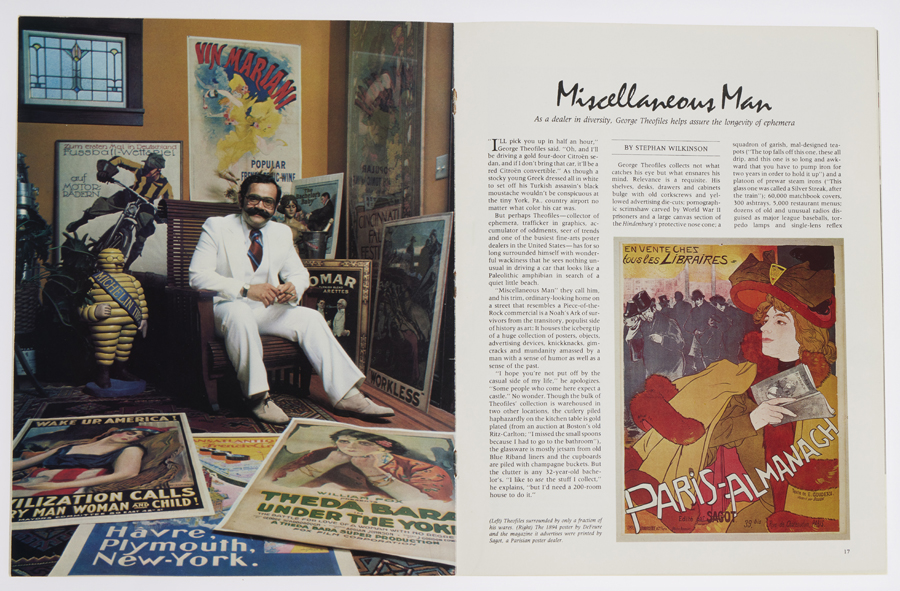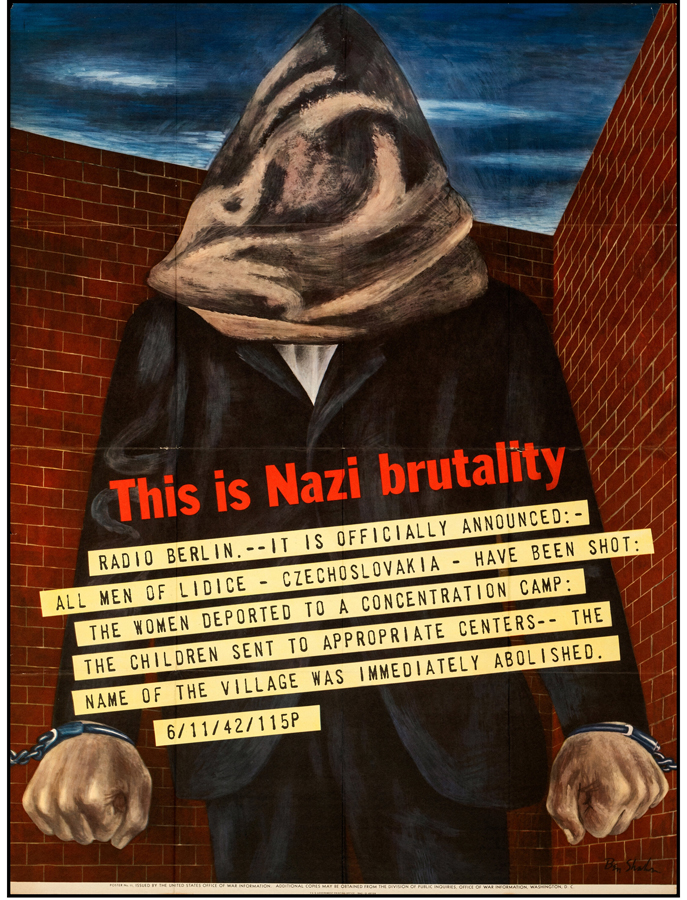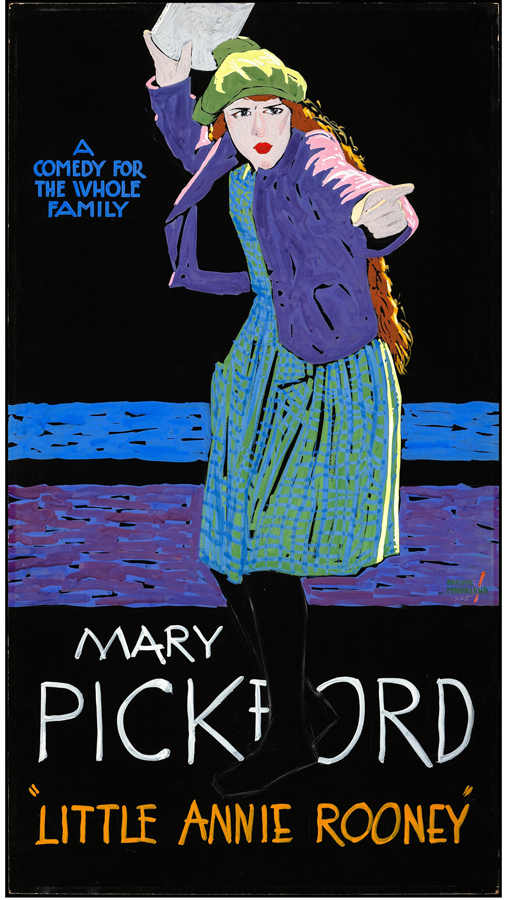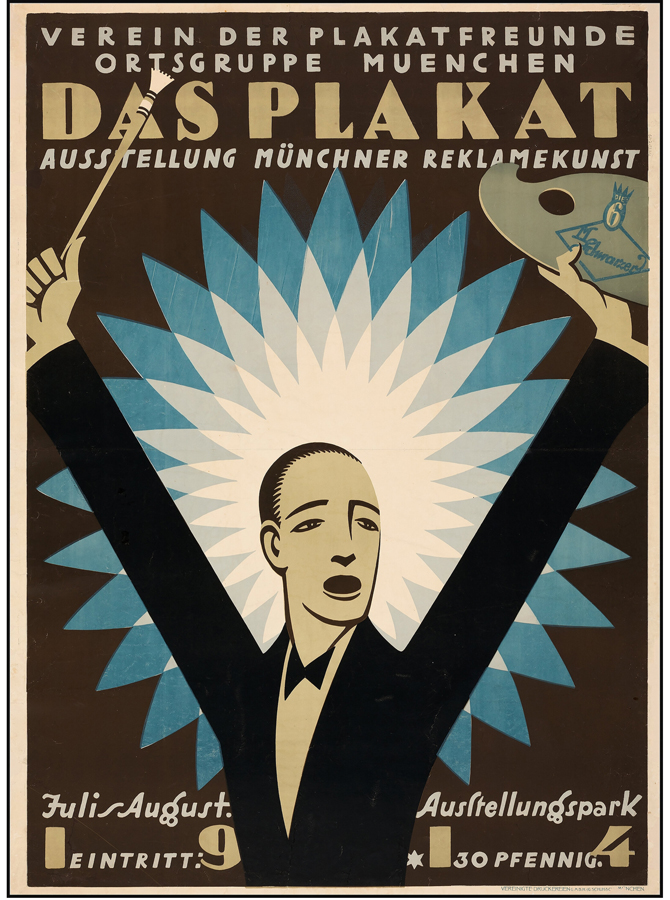GEORGE THEOFILES WAS CAPTIVATED BY VINTAGE POSTERS OF EVERY KIND, RESULTING IN AN ECLECTIC COLLECTION SPANNING MILITARIA, MOVIES, TRAVEL AND MORE
By Rhonda Reinhart
When it came to his collecting tastes, George Theofiles was the master of miscellany, acquiring objects as varied as vintage guns, cameras and Champagne buckets. But his greatest passion was posters, specifically vintage advertising ephemera ranging from war propaganda and political campaign materials to travel and movie posters. The collector and dealer – who bought his first poster at 8 years old – was so eclectic in his inclinations that when he opened his first poster shop in Baltimore in 1970, he gave his business the most accurate name possible: Miscellaneous Man. But the shop’s moniker had a deeper meaning, too: “It refers to the miscellany of mankind and the seemingly unimportant, rarely noticed paper relics of our daily lives,” Theofiles told Biblio magazine in March 1997. “None of this stuff, in and of itself, is necessarily important, but these little bits and pieces form the glue that keeps the pile together.”
In January 1980, 10 years after he launched his mail-order poster business Miscellaneous Man, lifelong collector George Theofiles was profiled in ‘The Franklin Mint Almanac.’
By 1973, Theofiles had moved his “pile” – or piles, rather – to bigger digs in New Freedom, Pennsylvania, where his selection grew to tens of thousands of posters. To uncover his treasures, he would scour flea markets and junk shops, antiques stores and auction houses, any place, really, that might reveal one of the paper artifacts that would eventually earn him clients as esteemed as the Metropolitan Museum of Art, the White House, the Library of Congress and the Smithsonian Institution.
From its 1970 beginnings until its founder’s passing in June 2022, Miscellaneous Man and its mail-order business model remained a go-to source for discerning poster collectors the world over. On April 5, collectors will get another chance to search Theofiles’ stacks when Heritage presents The Miscellaneous Man Poster Showcase Auction. The 393 lots in the auction, which hail from the late 1800s to the 1980s, feature subjects as diverse as ski resorts, cigars, silent films, women’s hosiery, John F. Kennedy’s 1960 presidential campaign and the early 19th-century German design magazine Das Plakat.
Sun Valley, Idaho (ca. 1940s). Very Fine- on Linen (20 x 29 inches).
“The name Miscellaneous Man is perfect because there are posters in this auction that defy categorization,” says Charles Epting, Associate Director of Posters at Heritage Auctions. “There are things that have never been offered for sale online, and they range from the familiar to the arcane.”
World War I and World War II propaganda is well represented in the auction, which is fitting as it was one of Theofiles’ favorite poster genres. In an oral history project conducted in 2013 for the R.W. Norton Art Gallery in Shreveport, Louisiana, Theofiles explained his penchant for propaganda. “When you’re talking about something like a poster for a perfume, this is a narcissistic situation. It’s about bettering yourself,” he said. “Propaganda is never about bettering yourself. It’s about bettering everybody who is on your side. Sacrifice, civic duty and your life – that, to me, is so much more important. That’s why I like propaganda. When it’s really good, it gets to a more visceral place, like fine art.”
‘This Is Nazi Brutality’ (U.S. Government Printing Office, 1942). Folded, Very Fine- (28.25 x 37.75 inches). Ben Shahn artwork.
Among the auction’s propaganda offerings is a variety of war recruitment posters. One standout features Leon Alaric Shafer’s painting The Spirit of 1917, which appeared on Marine recruitment posters distributed nationwide and stands as one of the most enduring images of American war propaganda. The poster’s color guard carries what were then the old and new flags of the United States Marine Corps, symbolizing the unity of the Marine forces. There’s also a powerful piece from the Office of War Information that calls attention to the 1942 Nazi massacre of Lidice, Czechoslovakia. Here, artist Ben Shahn depicts a shackled man with a bag over his head. Atop the image, in blood red, the words “This is Nazi brutality” are emblazoned above a reprinted memo detailing the barbarity.
“George’s collection showcases the work of some of the most prominent illustrators of the 20th century, and Ben Shahn is one of the best,” says Sarahjane Blum, Heritage’s Director of Illustration Art. “As much an activist as an artist, Shahn captured the atrocities of his day in ways that resonate just as much now as they did 80 years ago.”
‘Little Annie Rooney’ (United Artists, 1925). Very Fine (24 x 43.5 inches). Batiste Madalena artwork.
The auction also features plenty of lighter moments, from a striking 1967 concert poster for Simon & Garfunkel to a circa 1895 advertisement for The Girl’s Own Paper, a “six pence monthly” British magazine for young women. Other joyful gems include a whimsical circa 1942 Ringling Bros. and Barnum & Bailey circus poster and a colorful ensemble poster for the 1955 movie-musical Guys and Dolls. Cinema enthusiasts will find plenty to love, in fact, including a brilliant hand-painted poster for the 1925 film Little Annie Rooney, starring one of the biggest stars of the silent screen, Mary Pickford. The artist, Batiste Madalena, created the poster for Kodak founder George Eastman and his Rochester, New York, theater. Jump ahead half a century, and you’ll also find movie posters for some of the 1970s’ most massive hits, such as The Godfather, Star Wars and Saturday Night Fever.
As diverse as Theofiles’ collection was, he knew the origin and purpose of every item, at times acquiring hundreds of pieces of literature to aid in his extensive research. “If there was something that really gripped him, it gripped him, and he had to know everything about it,” says his widow, Shirley, who continued to operate Miscellaneous Man until just last year. “There were times he couldn’t sleep because it was just so exciting to him. He was a voracious reader – newspapers, magazines, books. He was just hungry for information.”
‘Das Plakat’ (Association of Poster Friends, 1914). Fine on Linen (35.75 x 49 inches). Max Schwarzer artwork.
While Theofiles’ collection is certainly noteworthy for its size, variety and celebration of graphic design, it’s impressive, too, that it even exists. As he told The Franklin Mint Almanac in January 1980, “Posters have a very low survival rate because they were never regarded as real art. They were flash art, made to be thrown away after a few weeks, and there are no more troves of old posters left.”
Thanks to Theofiles, though, there’s at least one more remarkable trove out there, and poster collectors everywhere soon will have the opportunity to own a piece of it.
 RHONDA REINHART is editor of Intelligent Collector.
RHONDA REINHART is editor of Intelligent Collector.

